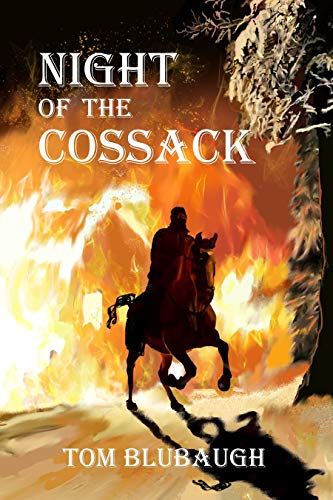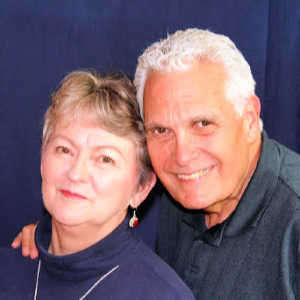Like many other homeschoolers, I rely heavily on books. I often talk about the learning opportunities in historical fiction and use a literature-based history curriculum. So when I met author Tom Blubaugh on LinkedIn, I was intrigued by his idea of a literature-based curriculum guide — a novel with lessons built into the story. Night of the Cossack is historical fiction for middle school children that includes 10 lesson plans. It’s perfect for a reluctant reader or a fun summer unit study.

I received this novel for review courtesy of the author; all opinions expressed remain my own. This post contains affiliate links; as an Amazon associate, I earn from qualifying purchases.
Night of the Cossack Plot Summary
When Cossacks attack his village, 16-year-old Nathan Hertzfield is captured and forced to become a Cossack himself. As he learns about life as a Cossack under Nikolai, Nathan—now called Stephan—worries about his mother and brother left behind. Slowly, Stepan’s hunting skills earn him the respect of the Cossacks, and Nikolai earns Stepan’s trust.
Then the Russians send the Cossacks to stop a revolt in Odessa. Stepan faces new challenges here and then betrayal. He escapes Odessa with only his horse and a few supplies and becomes Ivan, a man on the run for his life. With the help of new friends, Ivan makes his way across Europe to France. Here, an encounter with a friendly ship’s captain leads Ivan to think more deeply about his faith—and to emigrate to the United States.
My Thoughts on Night of the Cossack
Throughout Night of the Cossack, Nathan/Stepan/Ivan remains true to the values taught him by his mother. Although Nikolai pressures Stepan to give up his identity as a Jew, Stepan repeatedly expresses his concern about going against his faith. Stepan also resists pressure from his best friend (and fellow captive) to do other things that go against his sense of right and wrong.
Night of the Cossack takes place over several years and ranges from the Ukraine to Russia to Romania and then France. A sense of urgency pervades the novel, even as Stepan settles into his life as a Cossack. This urgency keeps the story moving forward, as Stephan leaves behind nearly everyone and anything that means anything to him by the end of the. I could well understand why Tom has had repeated requests for a sequel (which, he says, covid19 has finally given him time to start on).
Tom wrote the novel for children ages 12 and up, so I read it before giving it to my daughters. The main character is 16 when the story starts, and I usually look for books about characters closer to my daughters’ ages. Tom touches briefly on a couple of mature subjects; for example, the violence of the Cossacks, Nathan’s kidnapping, the nature of war. One other character is described briefly as a womanizer, but Stepan doesn’t participate in or endorse that behavior and there was nothing graphic in the discussion the two young men have about women.
Lily (who just turned 10) told me she was bored one day, so I handed her Night of the Cossack and said, “Read this.” Now, my husband and I are often recommending books to our daughters, based on what we read at their ages (both of us have many of our favourite childhood novels still). The girls don’t always take our recommendations, but Lily sat down to read. A few hours she came back to me and said, “I finished chapter 14. It’s really good.”
Literature-Based Curriculum Guide
Night of the Cossack is a literature-based curriculum guide and lesson plan. Students are invited to highlight, underline and write in the book as they read it and work their way through the ten lesson plans. Lessons cover language arts, math, science, social studies, and moral dilemmas. Students will need access to the internet for many of the activities, as Blubaugh encourages them to go online to research and to complete math and science problems.
For example, after reading the first few chapters about Nathan and his capture, Blubaugh sgugestes that readers research the Cossacks to learn more. I know a little bit about the Cossacks from other historical fiction I’ve read, but I was still intrigued by Nathan’s story and found myself wanting to know more. Tom Blubaugh capitalizes on this natural curiosity in kids by encouraging them to find answers for their questions.
The language arts sections include comprehension questions as well as analysis of the text, such as finding examples of Nathan’s thoughts in the chapter. Other activities include looking up words, comparing characters, and writing essays on questions raised in the text.
Math activities included looking up the weather for the Ukraine, researching currency conversions (as Ivan travels across Europe and has to use different currencies), and links to other math lessons. Many of the science lessons also included links or weather.
Social studies topics in the literature-based curriculum guide include the right to vote, the Bill of Rights, researching types of government, writing an essay about the Cossacks, and more.
The moral dilemma invites students to think deeply about the main character’s choices in the novel. For example, “Many people live with constant violence, which makes others fear them. What is the difference between fear and respect?” There are characters in the book who are both feared and respected, helping kids reflect on this topic and the difference between those characters.
While I like Tom’s idea of a literature-based curriculum guide included within a book, I think some topics work better here than others. The language arts, social and moral questions fit well with the story, letting kids dive deeper into what they were reading about. Some of the math and science topics felt more forced or random. I was also wary about the links in Night of the Cossack, knowing that links frequently change, and typing links can be a bit awkward.
As I read Night of the Cossack, I also read through the lesson plans and thought about the questions. When Lily read the book, I let her speed through it without pausing at the lesson plans (I suspect she skipped them entirely). I’d like to have her come back to the book and work through it again. Actually, I think reading through for the story and then reading a second time for the lessons is a good way to approach it, as we often gather more from a story on the second read-through.
For more literature-based curriculum guides, check out my list of Fun and Easy Homeschool Unit Studies.
More about Tom Blubaugh
 Tom Blubaugh is a freelance writer who lives in Southwest Missouri with his wife Barbara. They have six children and 14 grandchildren. Night of the Cossack is Tom’s first novel (and first foray into writing a literature-based curriculum guide) and he is working on a sequel.
Tom Blubaugh is a freelance writer who lives in Southwest Missouri with his wife Barbara. They have six children and 14 grandchildren. Night of the Cossack is Tom’s first novel (and first foray into writing a literature-based curriculum guide) and he is working on a sequel.
Tom has written nonfiction most of his adult life, including articles for a denominational magazine and an insurance publication. He co-wrote a devotional journal in 2009 for Barbour Publishing titled The Great Adventure. He also self-published a book, Behind the Scenes of the Bus Ministry in 1974.
Tom Blubaugh has been a public speaker for over forty years, a business manager and a marketing entrepreneur for nearly fifty years, and is currently a Literary Strategist (book marketing coach) working one-on-one with authors and writers in all aspects of the publishing arena, social media, brand building, and book marketing. To find out more about these services, check out Christian Authors Community & Services.
To find out more about Tom and his other books, drop by his website.
Have you used a literature-based curriculum guide with your children? Do you think they’d enjoy this method of learning?

No Responses Yet